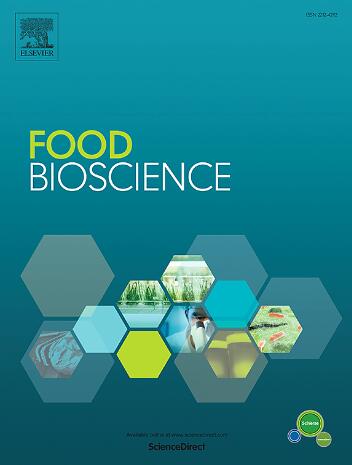Saikosaponin D ameliorates obesity and metabolic disorders via the gut microbiota-SCFAs-thermogenic fat axis
IF 4.8
1区 农林科学
Q1 FOOD SCIENCE & TECHNOLOGY
引用次数: 0
Abstract
Activating thermogenic programs in brown adipose tissue (BAT) represents promising approaches to combat obesity through dissipating energy. Saikosaponin D (Sa-D), a major triterpenoid saponin derived from Radix bupleuri (a traditional herbal product) could ameliorate obesity. Here, our results showed that Sa-D treatment for 12 weeks significantly suppressed weight gain and improved glycolipid abnormalities in high-fat-diet (HFD)-fed mice. Importantly, Sa-D treatment increased the expression of uncoupling protein 1 (UCP1) along with other thermogenic factors, as well as enhanced phosphorylation of PKA, AMPK, and p38 in BAT and inguinal white adipose tissue (iWAT). 16S rRNA sequence analysis revealed that Sa-D restored HFD-induced microbial dysbiosis and specific bacterial genera such as unidentified_Lachnospiraceae, Tyzzerella, Romboutsia, Bilophila, Oscillibacter, Sphingomonas, and Companilactobacillus were strongly associated with obesity-related traits and brown/beige-related markers. Moreover, Sa-D markedly increased the concentration of short-chain fatty acids (SCFAs), induced gene expression of SCFAs-producing enzymes (acetate kinase (Ack), methylmalonyl-CoA decarboxylase (Mcd), butyryl-CoA (BCoA) and propionaldehyde dehydrogenase (PduP)), and upregulated expression of SCFAs receptors (Ffar3, Ffar2, or Hcar2) in colon, iWAT, and BAT. Collectively, our findings revealed that Sa-D could ameliorate obesity by activating thermogenic fat, which may be associated with the alteration in microflora profiles and increased SCFAs levels.

求助全文
约1分钟内获得全文
求助全文
来源期刊

Food Bioscience
Biochemistry, Genetics and Molecular Biology-Biochemistry
CiteScore
6.40
自引率
5.80%
发文量
671
审稿时长
27 days
期刊介绍:
Food Bioscience is a peer-reviewed journal that aims to provide a forum for recent developments in the field of bio-related food research. The journal focuses on both fundamental and applied research worldwide, with special attention to ethnic and cultural aspects of food bioresearch.
 求助内容:
求助内容: 应助结果提醒方式:
应助结果提醒方式:


